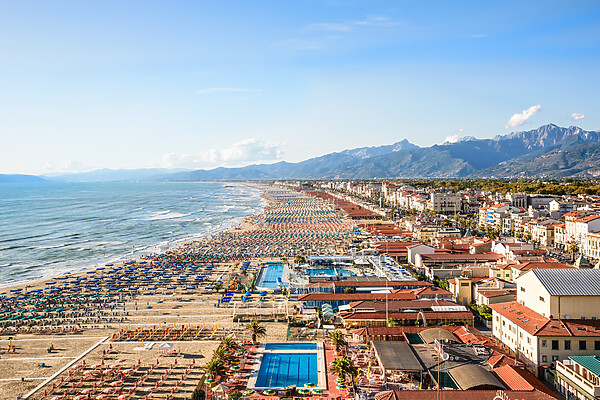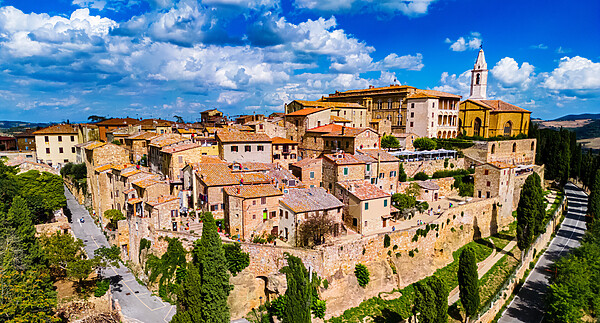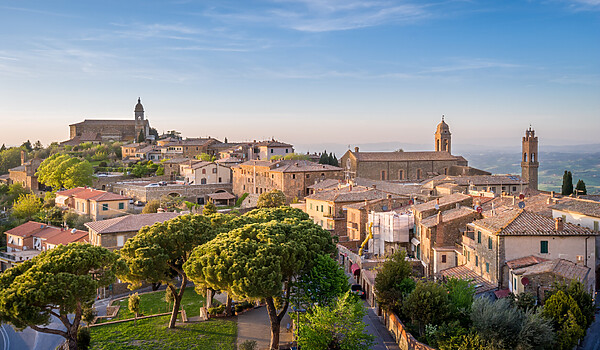Pisa, a city renowned for its architectural marvels, rich history, and vibrant culture, stands as a must-visit destination in Italy. Famous for the iconic Leaning Tower, Pisa offers a unique blend of historical landmarks, picturesque streets, and a lively atmosphere that captivates travelers. This guide will help you make the most of your trip to Pisa, highlighting top experiences and must-see attractions. Discover the best wineries in Pisa for an unforgettable wine experience.
What are the Best Things to Do in Pisa?
Marvel at the Leaning Tower of Pisa

Visiting the Leaning Tower of Pisa is a must when exploring Pisa. This world-famous architectural wonder is known for its unintended tilt, which has intrigued visitors for centuries. Climb the 294 steps to the top for breathtaking views of the city and surrounding Tuscan landscape. The climb can be steep, but the panoramic scene from the top is worth the effort.
The tower is part of the Piazza dei Miracoli, a UNESCO World Heritage site, which also includes the Pisa Cathedral and Baptistery. Be sure to book your tickets in advance to avoid long lines and get the most out of your visit. The Leaning Tower is not just an iconic photo spot but a testament to medieval engineering and design.
Explore the Piazza dei Miracoli

The Piazza dei Miracoli, also known as the Square of Miracles, is a must-see in Pisa. This UNESCO World Heritage site is home to some of the city’s most famous attractions, including the Leaning Tower, Pisa Cathedral, and Baptistery. As you stroll through the square, you’ll be captivated by the stunning architecture and lush green lawns.
The Pisa Cathedral, with its intricate façade and impressive interior, is a masterpiece of Romanesque architecture. The Baptistery, the largest of its kind in Italy, is renowned for its acoustics and beautiful design. Don’t miss the chance to explore the Camposanto Monumentale, a historic cemetery with fascinating frescoes and ancient Roman sarcophagi.
Visit the Pisa Cathedral (Duomo di Pisa)

The Pisa Cathedral, or Duomo di Pisa, is a stunning example of Romanesque architecture and a central feature of the Piazza dei Miracoli. Its construction began in 1064, and the cathedral is renowned for its intricate marble façade, bronze doors, and elegant arches. Inside, you’ll find a richly decorated interior with beautiful frescoes, mosaics, and a striking coffered ceiling.
The centerpiece of the cathedral is the impressive pulpit by Giovanni Pisano, adorned with intricate carvings depicting scenes from the New Testament. As you explore the Duomo, take a moment to appreciate the artistry and craftsmanship that went into creating this architectural gem. Entry to the Pisa Cathedral is free, but it’s advisable to get a timed entry ticket, especially during peak tourist season, to avoid long waits.
Walk to the Baptistery of St. John

The Baptistery of St. John, located in the Piazza dei Miracoli, is the largest baptistery in Italy and a marvel of medieval architecture. Constructed between 1152 and 1363, it features a blend of Romanesque and Gothic styles. The exterior is adorned with intricate carvings and graceful arches, while the interior is more austere, drawing attention to its unique acoustics.
One of the highlights is the beautifully crafted pulpit by Nicola Pisano, which showcases detailed scenes from the life of Christ. Visitors often participate in a unique acoustic demonstration, where a single note sung inside the baptistery reverberates, creating a harmonious effect. Climb to the upper gallery for a closer look at the domed ceiling and enjoy panoramic views of the surrounding piazza.
Discover the Camposanto Monumentale

The Camposanto Monumentale, also known as the Sacred Field, is a historic cemetery located in the Piazza dei Miracoli. Built in the 13th century, it is said to contain soil brought back from Golgotha during the Crusades, making it a significant religious site. The cemetery is an architectural gem, featuring a rectangular cloister with elegant arches and intricately carved marble tombs. One of the highlights is the collection of frescoes that adorn the walls, depicting scenes from the Bible and medieval life.
Though many frescoes were damaged during World War II, ongoing restoration efforts have brought some of them back to their former glory. As you wander through the Camposanto, you’ll also encounter ancient Roman sarcophagi and other historical artifacts. This tranquil and contemplative space offers a unique perspective on Pisa’s rich history and artistic heritage.
Wander through the Museo dell’Opera del Duomo

The Museo dell’Opera del Duomo, situated near the Piazza dei Miracoli, is a treasure trove of art and historical artifacts linked to Pisa’s cathedral complex. The museum houses a remarkable collection of sculptures, paintings, and religious objects that span several centuries. As you wander through its halls, you’ll encounter masterpieces by renowned artists such as Giovanni Pisano and Andrea del Sarto.
One of the museum’s highlights is the original sculptures from the cathedral’s façade, including intricate marble figures and decorative elements. The museum also offers detailed exhibits on the construction and restoration of the Leaning Tower, providing a deeper understanding of this iconic structure.
Stroll along the Arno River

Strolling along the Arno River offers a peaceful and scenic way to experience Pisa’s charm. The riverbanks are lined with historic buildings, elegant bridges, and picturesque views that provide a perfect backdrop for a leisurely walk. As you wander, you’ll pass by iconic landmarks such as the Palazzo Blu and the Church of Santa Maria della Spina, each adding to the rich tapestry of the city’s architectural heritage.
The Lungarni, as the streets along the river are called, are particularly enchanting at sunset when the buildings are bathed in a warm, golden light. Don’t forget to stop at one of the many cafes for a coffee or gelato as you take in the serene atmosphere. Whether you’re looking to unwind after a day of sightseeing or simply enjoy the beauty of Pisa, a stroll along the Arno River is a delightful experience.
Explore the Botanical Gardens of Pisa

The Botanical Gardens of Pisa, one of the oldest botanical gardens in Europe, offers a serene escape from the bustling city. Established in 1544 by the University of Pisa, the gardens are a beautiful blend of history and nature. As you explore, you’ll encounter a diverse collection of plants and trees from around the world, meticulously arranged in themed sections. Highlights include the ancient magnolia trees, medicinal herb garden, and the impressive greenhouse housing tropical species.
The gardens also feature historical elements such as old fountains and statues, adding to their charm. Whether you’re a botany enthusiast or simply looking for a peaceful place to relax, the Botanical Gardens provide a refreshing experience. Take your time to wander through the pathways, enjoy a picnic, or simply sit and absorb the tranquility. It’s a perfect spot to connect with nature while appreciating Pisa’s rich botanical heritage.
Visit the Palazzo Blu

The Palazzo Blu, located on the banks of the Arno River, is a cultural gem in Pisa. This elegant palace, painted in a striking blue hue, houses an impressive collection of art and historical artifacts. Inside, you’ll find exhibits ranging from medieval to contemporary art, including works by renowned artists such as Giovanni Fattori and Giorgio de Chirico. The museum also hosts temporary exhibitions that cover a wide array of themes, ensuring there’s always something new to see.
The Palazzo Blu’s beautifully restored interiors, with ornate ceilings and frescoes, add to the overall experience. Besides its art collections, the palace offers a glimpse into Pisa’s noble past through its rich furnishings and decor.
Discover the Church of Santa Maria della Spina

The Church of Santa Maria della Spina is a small but exquisite Gothic church located along the Arno River. Built in the 13th century, it was originally a chapel for sailors and merchants. The church is renowned for its intricate exterior, adorned with ornate spires, statues, and detailed carvings that make it a true architectural gem.
The name “Spina” refers to the thorn, or “spina,” from Christ’s crown of thorns, which was once housed in the church. Inside, the church is more modest but still captivating, with its serene atmosphere and beautiful sculptures, including a notable Madonna and Child by Andrea and Nino Pisano. Although it’s no longer used for regular worship, the church often hosts temporary art exhibitions.
Things to Do Around Pisa
Explore Chianti wine region

Located about 1 hour drive from Pisa, is one of Italy’s most celebrated wine regions Known for its picturesque vineyards and rolling hills, Chianti is famous for producing some of Italy’s finest wines, particularly Chianti Classico.
Insider tip: Rent a car to fully explore the region at your own pace. The local wines are characterized by their robust flavors and balanced acidity, typically made from Sangiovese grapes. In addition to wine, the Chianti region is also celebrated for its culinary delights, including olive oil, cured meats, and traditional Tuscan dishes.
Discover our selection of the best Chianti wine tours, carefully selected and curated by Winalist’s team.
Bolgheri

Bolgheri, roughly an hour and a half from Pisa, is a wine lover’s paradise known for its prestigious Super Tuscan wines and picturesque cypress-lined roads. This charming village is nestled in the heart of the Tuscan coast and offers a unique blend of natural beauty and world-class wine production. As you explore Bolgheri, you’ll be captivated by its medieval architecture, quaint streets, and stunning views of the surrounding vineyards. Key highlights include visiting renowned bolgheri wineries which produces some of Italy’s finest wines. Many of these estates offer guided tours and tastings, allowing you to immerse yourself in the rich flavors and history of the region.
Visit the iconic town of Florence

About 1.5h drive or a quick train ride away, Florence is the cradle of the Renaissance and a treasure trove of art, history, and culture. Start your journey with a visit to the iconic Duomo, where you can marvel at Brunelleschi’s dome. The Uffizi Gallery is another highlight, housing masterpieces by Botticelli, Michelangelo, and Leonardo da Vinci. Stroll across the Ponte Vecchio, the city’s oldest bridge, lined with charming jewelry shops. Don’t miss the Palazzo Vecchio and the adjacent Piazza della Signoria, a vibrant square filled with statues and historical landmarks. For breathtaking views of the city, head to Piazzale Michelangelo.
Discover our guide on the best things to do in Florence as well as some top rated Florence wine tours
Good to Know to Plan Your Trip to Pisa
What are the Best Hotels to Stay in Pisa?
When visiting Pisa, you’ll find a variety of accommodations to suit your needs, from luxury hotels to charming boutique options. Here are some top recommendations:
– Hotel Relais dell’Orologio: A5-star hotel located in a historic building. Offers elegant rooms and top-notch amenities, perfect for a luxurious stay.
– Hotel Bologna: A4-star boutique hotel known for its stylish accommodations and convenient location near main attractions.
– Hotel Pisa Tower: A4-star hotel that provides modern rooms and exceptional service, ideal for those seeking comfort and proximity to the Leaning Tower.
Each hotel offers a unique experience catering to different preferences and budgets. Whether you prioritize luxury, convenience, or a blend of both, Pisa has a range of hotels that can enhance your stay and make your trip memorable.
What are the Best Traditional Restaurants in Pisa?
Pisa offers a delightful array of traditional restaurants where you can savor authentic Italian cuisine:
– Osteria di Culegna: Known for its cozy atmosphere and delicious Tuscan dishes made from fresh, local ingredients.
– Ristorante La Scaletta: Offers a warm ambiance and a menu featuring classic Pisan specialties, including seafood and pasta.
– Trattoria Sant’Omobono: Beloved for its hearty, homemade meals and friendly service, providing a true taste of local tradition.
Each of these restaurants provides a unique dining experience that highlights the rich culinary heritage of Pisa. Whether you’re enjoying a leisurely dinner or a quick lunch, these traditional eateries offer a perfect opportunity to indulge in the flavors of Tuscany. Don’t forget to pair your meal with a glass of local wine for a truly memorable dining experience.
What is the Best Time to Visit Pisa?
The best time to visit Pisa is during the spring (April to June) and early autumn (September to October) when the weather is mild and the city is less crowded. During these months, you can enjoy pleasant temperatures, ranging from 60°F to 75°F (15°C to 24°C), making it ideal for sightseeing and outdoor activities. Spring brings blooming flowers and vibrant greenery, enhancing the beauty of the city’s parks and gardens. Early autumn offers a comfortable climate and the added charm of harvest season, with local festivals and fresh produce. While summer (July to August) is also a popular time to visit, be prepared for higher temperatures, which can reach up to 90°F (32°C), and larger tourist crowds. Winter (November to March) is the off-season, offering cooler weather and fewer tourists, but some attractions may have reduced hours. Choose your travel time based on your weather preferences and desired crowd levels.
How To Get Around Pisa?
Getting around Pisa is convenient and straightforward, making it easy to explore the city’s attractions. The city center is compact, so walking is often the best way to get around. Many of Pisa’s key sights, including the Leaning Tower, Pisa Cathedral, and Piazza dei Miracoli, are within walking distance of each other. For longer distances, public transportation is readily available. The local bus network, operated by CPT, covers most areas of the city and its outskirts. Tickets can be purchased at tobacco shops, newsstands, or directly from the bus driver. If you prefer a more flexible option, consider renting a bicycle. Pisa is bike-friendly, with numerous rental shops and dedicated cycling lanes. Taxis are also available and can be hailed on the street or booked in advance. For trips outside the city, Pisa Centrale train station offers regular connections to nearby destinations, including Florence and Lucca.
What Should I Pack for a Trip to Pisa?
When packing for a trip to Pisa, consider the season and planned activities to ensure you’re well-prepared. Comfortable walking shoes are essential, as you’ll likely spend a lot of time exploring the city’s historic sites on foot. In the warmer months (spring and summer), pack lightweight clothing, sunscreen, sunglasses, and a hat to protect against the sun. A reusable water bottle is also handy for staying hydrated. For the cooler months (autumn and winter), bring layers, including a warm jacket, scarf, and gloves, as temperatures can drop, especially in the evenings. An umbrella or raincoat can be useful in case of unexpected showers. Don’t forget your camera or smartphone to capture the beautiful sights of Pisa. Additionally, pack any necessary travel documents, such as passports and booking confirmations, along with a small daypack for carrying essentials while you explore. Being well-prepared ensures a comfortable and enjoyable trip.
What are Some Must-Try Dishes in Pisa?
Pisa offers a delectable array of traditional dishes that reflect the rich culinary heritage of Tuscany. One must-try dish is “cacciucco,” a hearty seafood stew made with a variety of fish and shellfish, cooked in a flavorful tomato base. Another local favorite is “pappa al pomodoro,” a comforting soup made with ripe tomatoes, stale bread, olive oil, garlic, and basil. For pasta lovers, “pasta e fagioli,” a bean and pasta soup, is a rustic and satisfying choice. Don’t miss “cecina,” a savory chickpea flour pancake that is crispy on the outside and soft on the inside, often enjoyed as a street food snack. Meat enthusiasts should try “tagliata di manzo,” a sliced beef steak typically served with arugula and Parmesan. To complete your meal, indulge in “torta co’ bischeri,” a traditional Pisan pie filled with rice, chocolate, and nuts. These dishes provide a true taste of Pisa’s culinary traditions.











